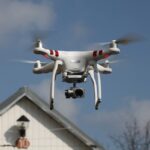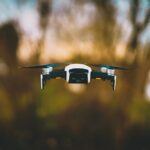Drones have become increasingly popular in recent years, with more and more people taking to the skies to capture stunning aerial footage or simply enjoy the thrill of flying. However, as with any new technology, there are common mistakes that can easily be avoided with a little bit of knowledge and preparation. In this article, we will discuss some tips for smooth drone flights and how to avoid common mistakes that can ruin your flying experience.
One of the most common mistakes that drone pilots make is not properly calibrating their drone before takeoff. Calibrating your drone’s compass and accelerometer ensures that it has an accurate understanding of its position and orientation, which is crucial for stable flight. Failing to calibrate your drone can result in erratic behavior and even crashes, so always take the time to calibrate before each flight.
Another common mistake that beginners often make is flying too aggressively or trying to perform advanced maneuvers before mastering the basics. It’s important to start out slow and practice basic flight maneuvers such as takeoff, landing, and hovering before attempting more complex maneuvers. This will help you build confidence and improve your skills gradually, leading to smoother and more controlled flights.
One of the biggest challenges for drone pilots is understanding and following airspace regulations. It’s important to familiarize yourself with the rules and regulations in your area, as flying in restricted airspace can result in fines or even criminal charges. Always check for any temporary flight restrictions or other airspace limitations before taking off, and be sure to follow all guidelines set by the Federal Aviation Administration (FAA) or other relevant regulatory bodies.
Another common mistake that drone pilots make is neglecting to check their equipment before flying. It’s important to perform a pre-flight checklist to ensure that your drone is in proper working order and that all components are securely attached. Check for any loose screws or damaged propellers, and always make sure that your batteries are fully charged. Taking the time to thoroughly inspect your equipment before each flight can prevent unexpected malfunctions and crashes.
Lastly, it’s important to practice good flying etiquette and be respectful of others when flying your drone. Avoid flying over private property without permission, and be mindful of your surroundings to avoid disturbing wildlife or intruding on people’s privacy. Always fly responsibly and follow the “know before you fly” guidelines to ensure that you are not causing harm or inconvenience to others.
In conclusion, by following these tips and avoiding common mistakes, you can ensure that your drone flights are smooth, safe, and enjoyable. Remember to always calibrate your drone, practice basic maneuvers, follow airspace regulations, check your equipment, and fly responsibly. With a little bit of preparation and practice, you can become a skilled drone pilot and enjoy countless hours of thrilling flights.





